Untransplantable memory? When the "Pillar of Mourning" becomes the "Pillar of Shame"
** The original English version was published in "New Bloom Breaking Ground" , this article is the author's translation version
Two days after the University of Hong Kong wrapped the Pillar of Shame on its campus with plastic wrap and removed it, the Taiwan Chinese Democratic College (Hua Min) held a press conference in the Legislative Yuan to respond to the incident.
Before the press conference, the former CEO Wang Xingzhong suddenly had an idea before the conference, and said to the chairman Zeng Jianyuan, "Let's just move it to Taiwan!" , the origin of Taiwan's reconstruction.
But after the limelight, the reconstruction plan was actually criticized by many.
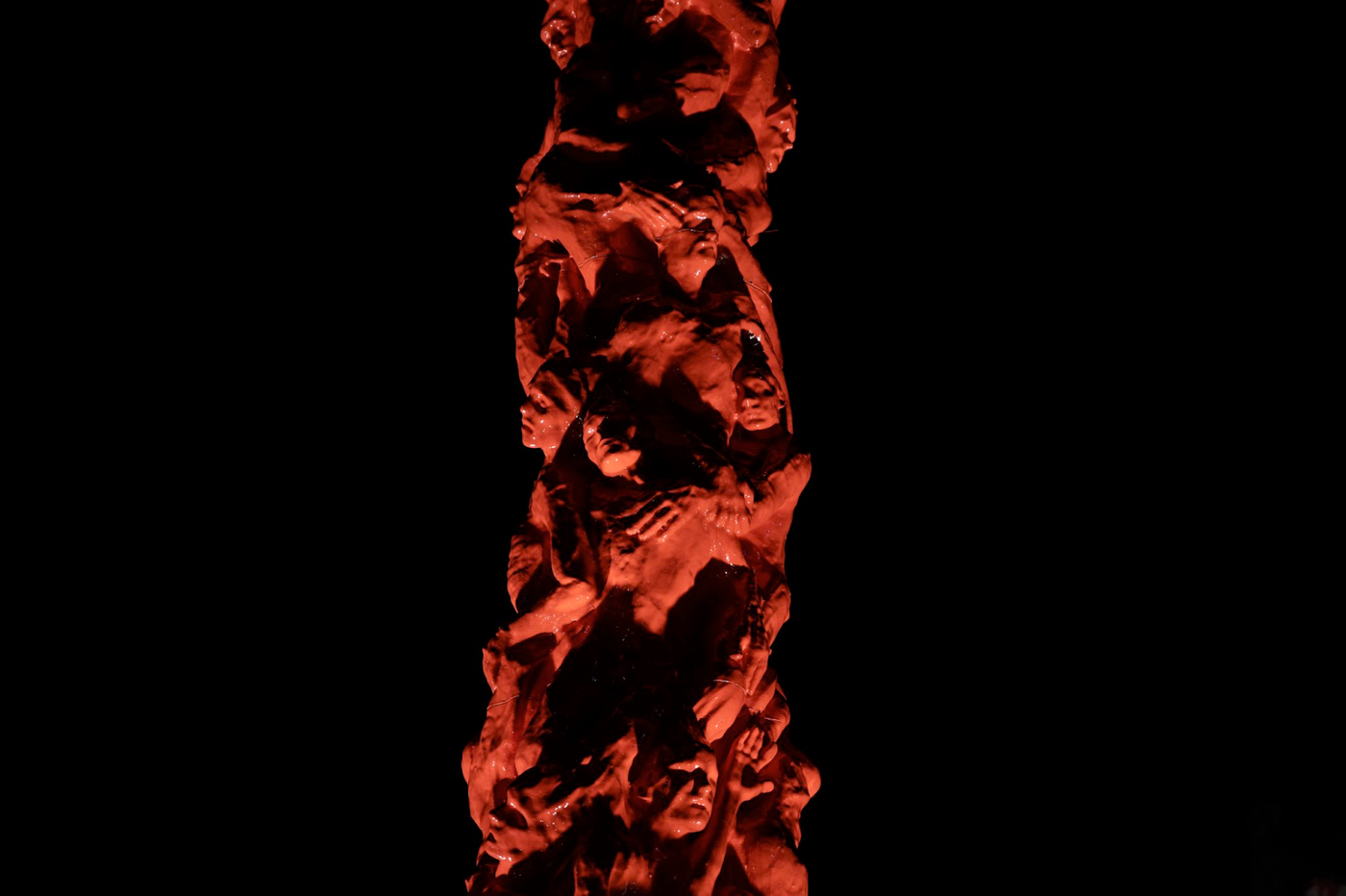
After the June 4th incident, Hong Kong people were very shocked and saddened by it; many people learned about the incident through the news media, watched the incident, and then protested by marching. Immediately after the numerous demonstrations in 1989, people shouted at the Victoria Park candlelight party on the 1st anniversary of June 4th, "Release the pro-democracy activists, rehabilitate the pro-democracy movement of 1989, hold the massacre accountable, end the one-party dictatorship, and build a democratic China."
In 2014, before the Umbrella Movement broke out, the slogan changed to "Rehabilitate the June 4th Fight to the End." On the 32nd anniversary of June 4th, Hong Kong protesters in Victoria Park, regardless of pan-democratic or local stance, shouted "fight for freedom and a common destiny". When people in Hong Kong pursue democracy and freedom, they also seek to vindicate the June 4 incident.
The June 4 incident is a collective memory of Hong Kong people, and the Pillar of Shame in Hong Kong is a symbol that carries this collective memory.
The translation of Pillar of Shame in Hong Kong is "Pillar of National Mourning". It is the first in a series of the same name by Danish sculptor Jens Galschiøt. In 1997, Gao Zhihuo transported it to Hong Kong with the efforts of Hong Kong civil organizations and volunteers to mourn the June 4th Incident.
It first appeared at the June 4th Dimension Garden Gala in 1997, and later toured exhibitions in different universities; finally, the University of Hong Kong University voted to be its permanent director in 1998, and it has been placed on the campus of the University of Hong Kong since that year.
Since 2002, the Federation of Hong Kong Citizens Supporting Patriotic Democratic Movements (Stake) has cleaned the Pillar of Shame every year. Even after the Umbrella Movement, different students and politicians began to doubt the stake's ambition to "build a democratic China" and alienated the stake, the University of Hong Kong University still washes the sculpture every year, and also organizes a memorial service for June 4th.

The sculpture was removed by the University of Hong Kong at a time when Hong Kong's freedoms fell, regulatory crackdowns and self-censorship became more severe. Although the school has now allowed Gao Zhihuo to take away the work that was reportedly cut in half, he was unable to find a transportation company that dared to help deliver it. The fate of the sculpture is uncertain; its original site is now a resting space.

Seeing the school's rude behavior, Zeng Jianyuan wanted to do something to preserve the traces of the June 4th incident.
With the help of 3D printing technology, Huamin can rebuild the Pillar of Shame at a relatively low cost. Huamin launched a reconstruction plan on the crowdfunding website FlyingV, listing two-stage monetary targets: NT$640,000 to rebuild a 3-meter-high sculpture, and a 7.5-meter-high sculpture (“5 meters” on the website should be a typo) 1,500,000 yuan. Compared with re-manufacturing, 3D printing can save at least half the cost.
Unfortunately, the crowdfunding scheme has angered some netizens. Among the controversies included the mainstream translation of Pillar of Shame in the past, "Pillar of National Mourning".
Although Hua Min created a new Chinese name for the sculpture "Shame Column" and removed the word "country", many media still use the old translation; in recent interviews with Zeng Jianyuan by Radio Free Asia and Chase News , this sculpture is still known as the "Pillar of Remorse".
Netizens questioned, "Why do we commemorate the events of other countries?", "The 64 of the Chinese have nothing to do with the Taiwanese", "Taiwan is not the foundation of the Hong Kong people's nation".
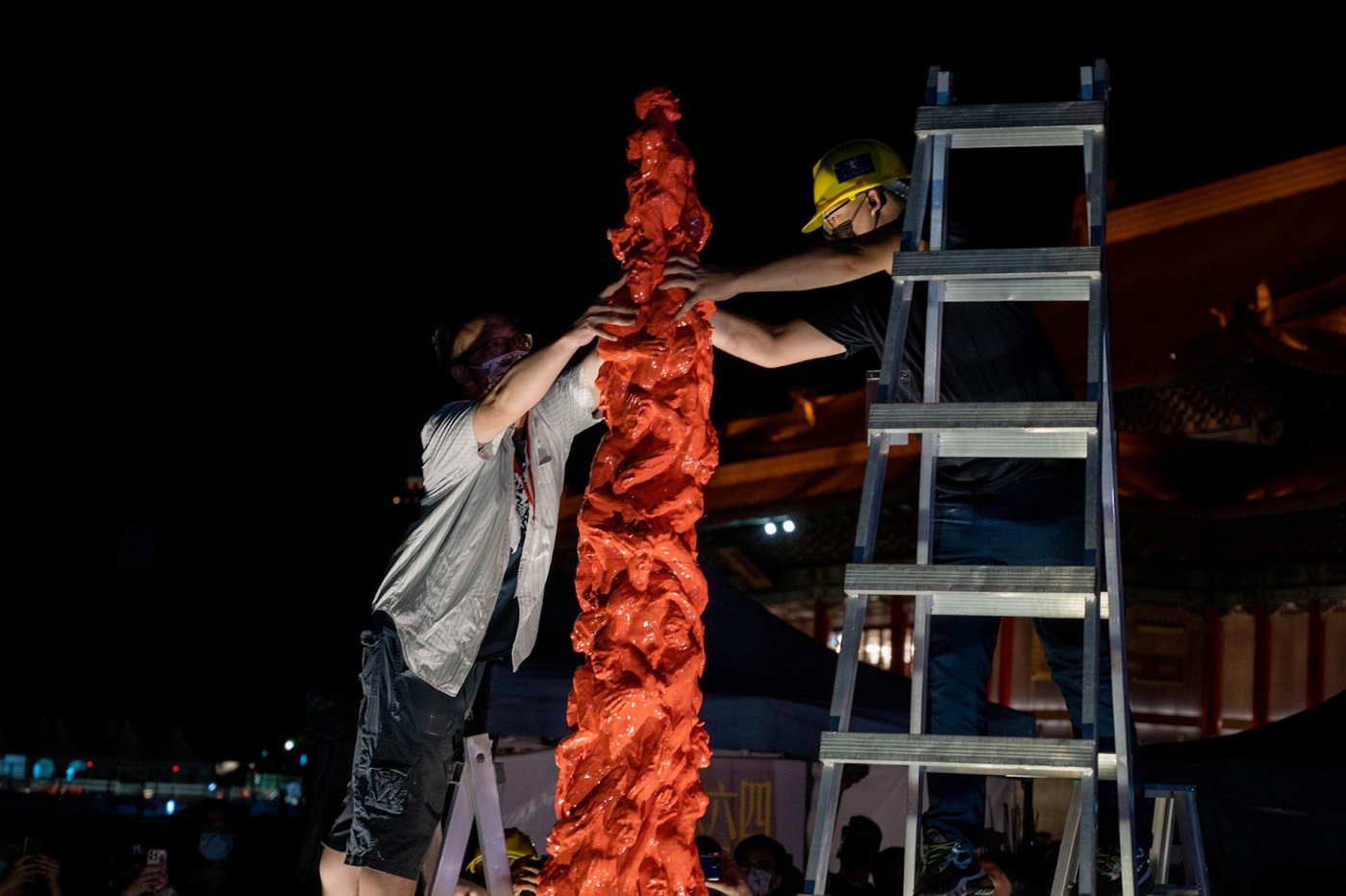

As early as 1996, Gao Zhihuo's motivation for creating Pillar of Shame was not limited to mourning June 4th.
He states on his website that each Pillar of Shame serves as a reminder of "a horrific event that should never happen again" and that "each sculpture will have a pedestal that fits its local context." It is not a "June 4 Incident Pillar"; the Pillar of Shame in Hong Kong is just one of a series of sculptures commemorating human rights disasters around the world.
The appearance of this artwork also reflects Gao Zhihuo's original intention. The faces on the sculpture are blurred . Gao Zhihuo did not want to highlight a certain ethnic group in this work. The Pillar of Shame in his mind is diverse.
But after the University of Hong Kong removed the Pillar of Shame in Hong Kong, Gao Zhihu now wants to use this sculpture to let the world understand the struggle in Hong Kong and the pursuit of democracy in China.
Well-known scholar Wu Ruiren clarified that the reconstruction plan of Pillar of Shame in Taiwan is not limited to commemorating the June 4th incident, but to commemorate any humanitarian crime. He said that as a democratic country, Taiwan should contribute to ending human suffering.
Legislative Council member Fan Yun believes that what really matters is the unreasonable removal of the sculpture by the University of Hong Kong and the violent crackdown in 1989. Jiang Minyan, a researcher at the United Economic Democracy, hopes that people can learn more about human suffering and not focus on the translation of names.
While it's hard to gauge how persuasive these supporters' speeches were, the crowdfunding results didn't look like the plan was going well. Two months after the start of the crowdfunding, only 55 people participated in the fundraising, and Huamin only raised enough money to rebuild the 3-meter-high sculpture; compared with the goal of the 7.5-meter-high sculpture, the amount of money was less than half. There are many media reports that the crowdfunding plan "successfully met the target", but in fact it is only half successful.

Zeng Jianyuan revealed that a large amount of money came from a single source. "In Taiwan, where there are 23 million people, only 50 people raised funds; and most of the money came from a single source, because they didn't want the results to be too embarrassing. The effect was not good and the number of people was small."
He sighed that he had thought about whether the crowdfunding could really be successful, but he decided to give it a go, and used it as a test to see how much Taiwanese society took on the June 4 incident.
"Taiwanese are now crowdfunding half of the target amount. So be it, admit that people's interest in the June 4 incident is 'only half'."
The new translation did not save Huamin's plans from controversy. From the speeches of supporters, it can be found that the main reason for the reconstruction of the sculpture is still to fill the space that Hong Kong has just lost to commemorate June 4th; other human rights disasters are at most incidental motives of the reconstruction plan.
In an Amnesty International webinar on May 14, I asked Goh about what Pillar of Shame means now. Gao Zhihuo said that the sculpture is still about human rights disasters around the world. "There are a lot of different people here," he said. In addition to Hong Kong, he has also erected a sculpture of the same name in Italy, Mexico and Brazil, which he believes is "continue happening" around the world and that the sculpture project is "about all human rights tragedies". However, he stressed that "at the moment, if one were to choose to commemorate a human rights disaster, almost everyone would choose the one in China."
Zeng Jianyuan made no secret of his mourning for the June 4th incident, which was the fundamental reason for the academy to initiate the reconstruction plan. "If Brazil's pillar of shame was removed, it wouldn't have caused our shock and probably wouldn't have taken action; it was because of June 4, because of Hong Kong, that we initiated this plan."
On the FlyingV website, Hua Min explained that "I hope to take this opportunity to declare to the world that Taiwan attaches great importance to creative freedom and human rights." Although the description mentions that "the significance of its burden will no longer be limited to the June 4th incident", but in the When the crowdfunding began, Huamin planned to unveil the replica of Pillar of Shame at the 33rd anniversary of June 4th, "a moment of silence for the victims of the June 4th incident, and a voice for all the victims of China's oppression."
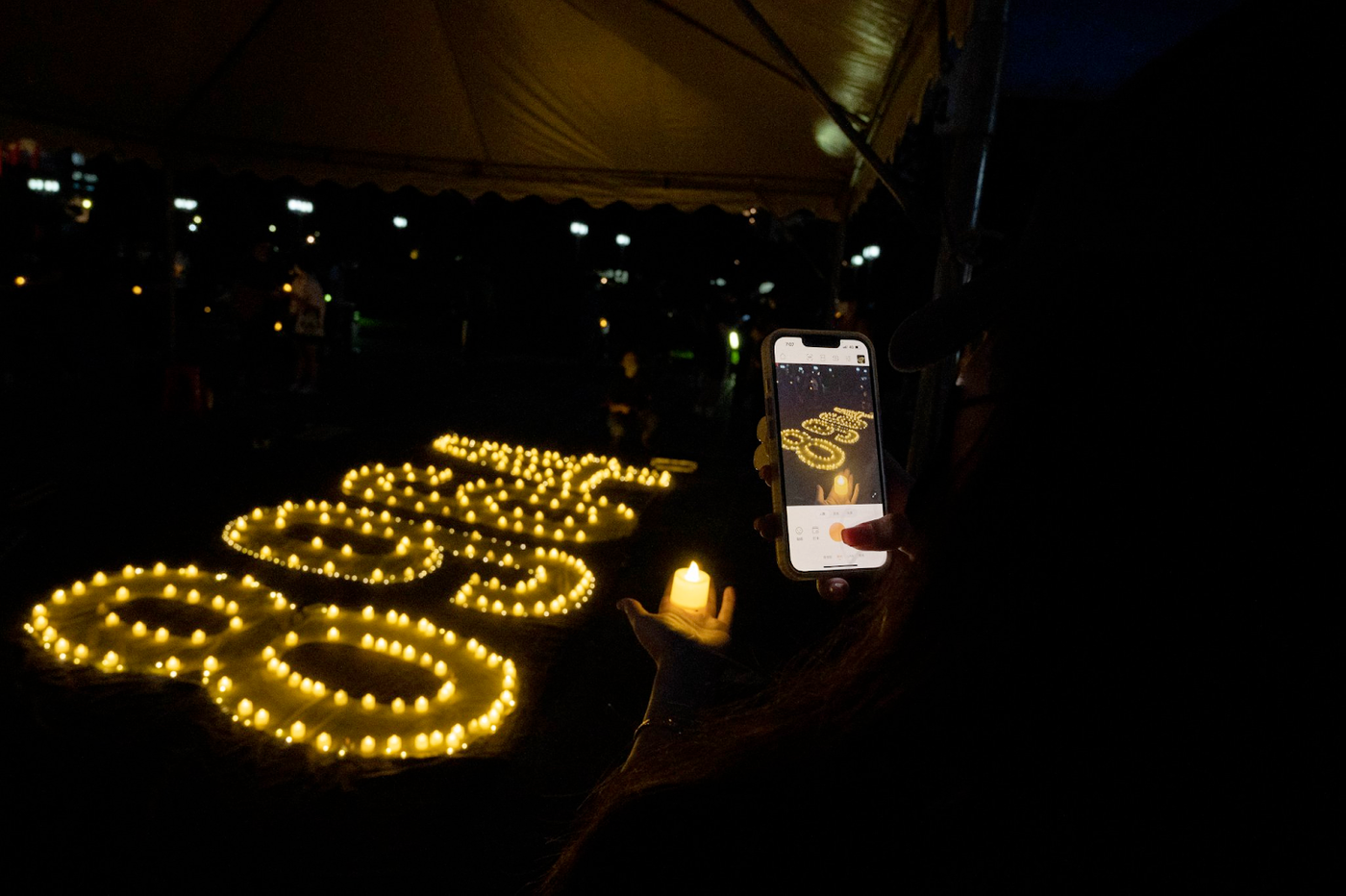
Contrary to Hua Min and Gao Zhihuo's expectations, many Taiwanese do not regard the June 4 incident or Hong Kong's mourning as part of their own history, nor do they think it is something they should be concerned about. In this controversy, the real issue is attribution to events.
DPP legislator Lin Jingyi questioned , "Before we talk about the 'pillar of national mourning', we must first find out which country is the national mourner." She said, "Taiwan is a country that is often eaten with tofu and is classified as a part of China (a fundamentally different country), and putting a 'pillar of national mourning' in Taiwan is to help a country that "doesn't think it is their national mourning" to commemorate 'them' Is the act of national mourning of the country" finally interpreted as the national mourning of "our country"? "Her post received 6,600 likes.
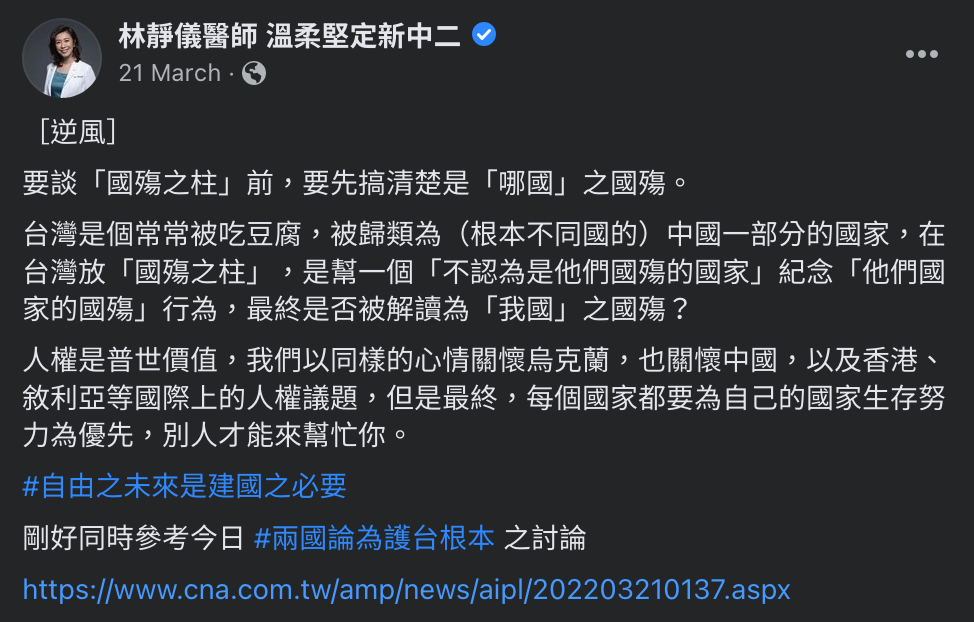
Another critic, Taiwan Jijin Secretary General Wang Xinghuan, said, "If it is to remind the island of 'the fate of being merged into China', then I support anything that #humiliates China in Taiwan." However, "if it is not an insult to China. , not to warn (to be) of the fate of being a Chinese, but "China's human rights issues need special attention", "Then let's avoid it!"
In the interview, Wang Xinghuan pointed out that it was not any Pillar of Shame that was re-engraved this time. "Do other pillars have 'June 4 Massacre' and other slogans engraved on the pedestal?"
For him, the only acceptable meaning of this replica sculpture is to remind Taiwanese of the fate of being unified by China. For his partymates, though, the meaning is also unacceptable, "they would ask, 'Why should we be reminded by this sculpture?'"

Huamin was established in Hong Kong and Taiwan in 2011, 15 years after Pillar of Shame in Hong Kong. It was established to promote Chinese social democracy and exchange views in the three places on both sides of the strait.
Zeng Jianyuan said that it is understandable that young independent friends have no national identity with China. Although the early independent factions used ethnic politics as their political mobilization strategy, they all grew up under the education of the Great China Thought, and still had feelings for the Great China. For the young faction, they have no common historical experience with the past struggles and atrocities in China, and it is difficult to empathize with them.
Under the local discourse, "If 'Taiwan is Taiwan, China is China' on the issue of the column of shame, then Taiwan's subjectivity needs to be highlighted to strengthen Taiwan's consciousness. In this way, in the eyes of radical separatists, China needs to be excluded. The whole discussion becomes a dispute between unity and independence.”
According to the National Chengchi University's Election Research Center, the proportion of Taiwan's population who self-identify as "Taiwanese" will rise from 17.6% in 1992 to 62.3% in 2021. In contrast, the proportion identifying as "Chinese" fell from 25.5% to 3.2% in 29 years. In addition, in Taiwan's June 4th party, only a few hundred people participate on average every year .
He believes that "natural independence" is a natural phenomenon. The people of Taiwan and the Chinese people not only have different positions on the political system, but also have differences in culture, public life, and national character, and the gap is getting bigger and bigger. Even with the close exchanges between the two sides of the Strait during the Ma Ying-jeou period, the Sunflower Movement still took place. "The more you communicate, the more alienated you become. Seeing it through is like getting acquainted through misunderstanding and separating because of understanding."

In the face of this difficulty, the current direction of the academy is to transform national identity into a discourse on universal values and Taiwanese values, so that Taiwanese society realizes that China's democratization and the June 4th Incident are not only a matter of China's scope. Even if the starting point is different, we can agree with the issue of Chinese democracy that the academy cares about. "If China does not have democracy and universal values, it will have an enemy attitude towards Taiwan, which is very unfavorable to Taiwan."
Zeng Jianyuan lamented that under the CCP's rule, the interpretation of "China" falls in the hands of the totalitarian regime. "China" has become an existence outside of Taiwan, and Taiwan's identity and China's identity have become a competitive relationship. Zeng Jianyuan hopes that the Taiwanese people will treat "the CCP" and "China" separately, just as the academy is determined to support the ethnic groups oppressed by the CCP, when the Taiwanese people unite with other oppressed people, it will be most beneficial to Taiwan.
At this year's June 4th party in Taiwan, Zeng Jianyuan pointed out that there were more than 1,000 participants. "Taiwan must show the world its determination to protect democracy," he said in his speech.
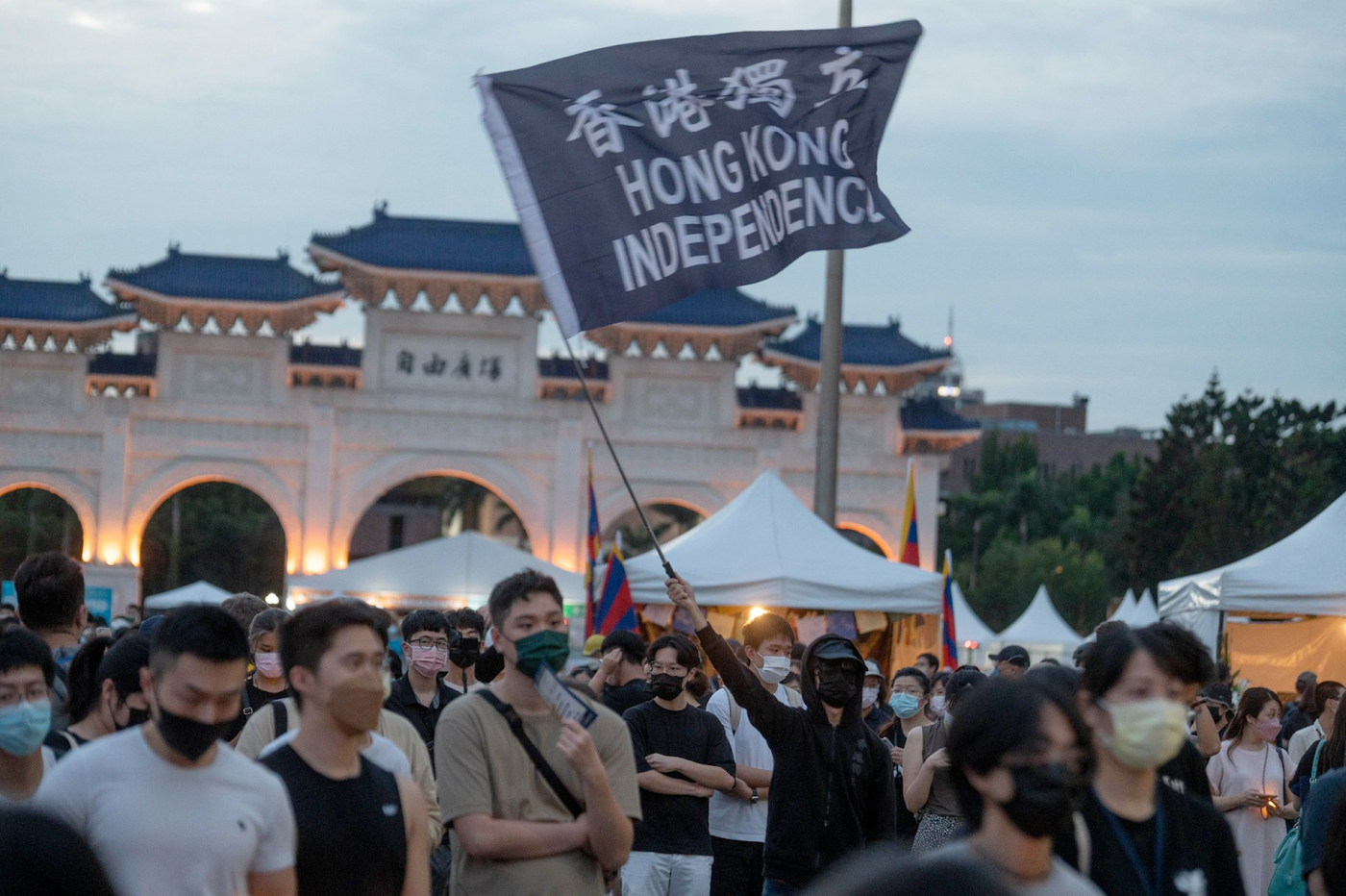
He believes that taking the June 4 incident as his own business is not only because of Chinese feelings, nor because of universal human rights concerns, but because of real political reasons. "If China is not democratic, how can Taiwan be independent?"
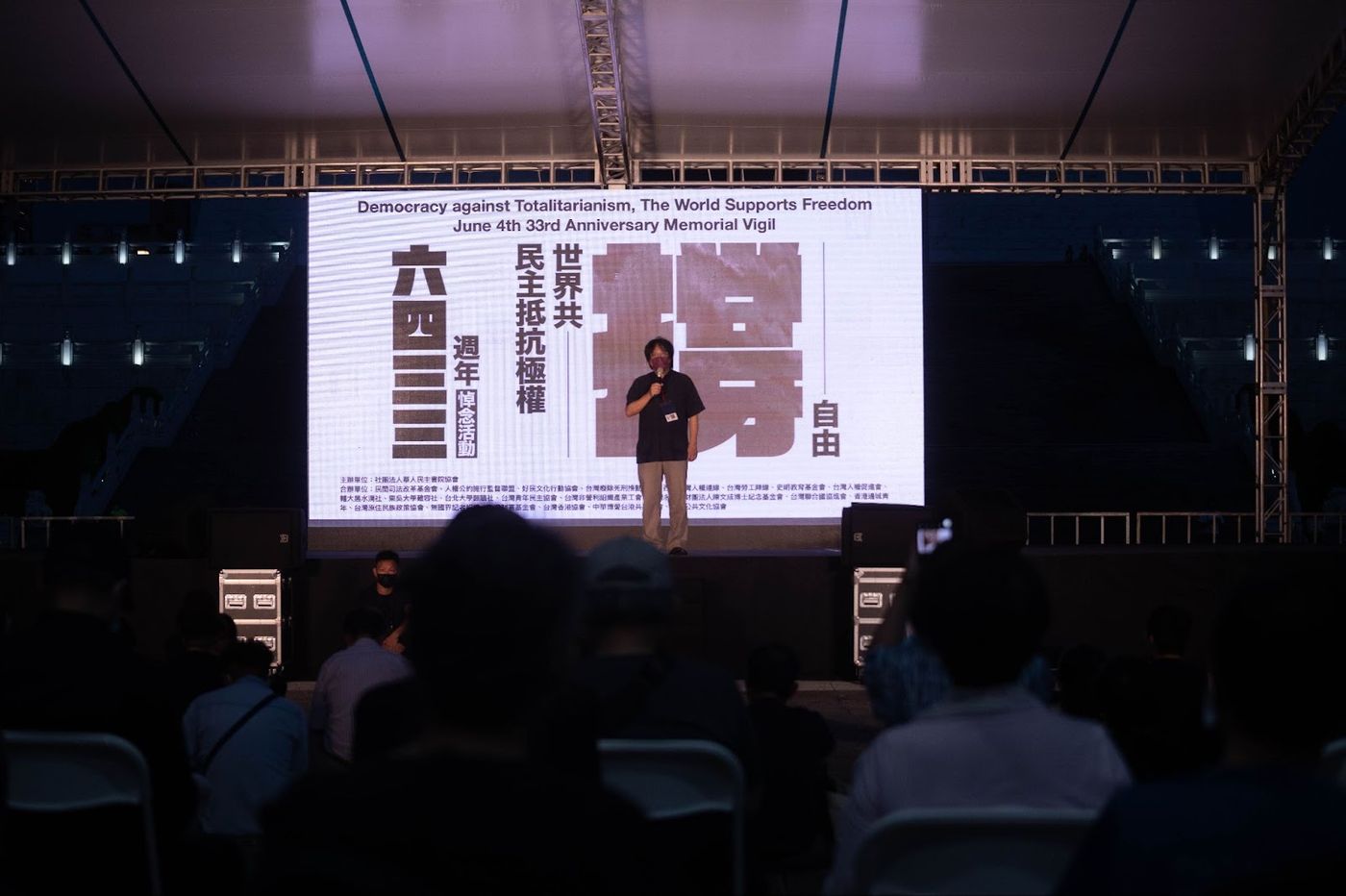
However, a Chinese student who goes by the pseudonym D told me, "I clearly feel that the June 4 incident has been marginalized in Taiwan. Most Taiwanese see it as 'an affair of another country', not their own."
"I don't comment on other people's opinions. However, I am still very grateful to Taiwan. At least I can mourn here the June 4 incident that made me remember."
Most of the participants of the Taiwan June 4th Gala this year were from Hong Kong, showing that the event resonated with the Taiwanese-Hong Kong community. But that's exactly the problem: it doesn't seem to be able to reach local Taiwanese.
"I'm not sure if Taiwan is suitable for an anti-communist base," said Zoe Chiang, a graduate student at the institute. She believes Taiwan has its own problems and lacks internal consensus. "I support anti-communism, but do Taiwan, China and Hong Kong really have common priorities, goals and processes? I don't think so."
This replica sculpture gave her an incongruous feeling, "I feel that it has little connection with this, the landmark of the Kuomintang authoritarian government; and we are still reviewing the issue of transformational justice in this square."
For prospective college graduate Ma Yang-yi, it would be a good thing if the sculpture could stimulate participants to think and reflect on the events of June 4, rather than just mourning. "But at the moment I don't see how this can be done in Taiwan. The pillar is more in the context of Hong Kong, and it doesn't mean much to Taiwanese."
Huang Shumei, an associate professor at the Institute of Urban and Rural Affairs of National Taiwan University, believes that it is very difficult to transplant the memory of June 4 overseas. "The June 4 incident has gradually faded out of public memory in Taiwan over the years. If this replica sculpture cannot connect enough local people, it will be difficult for the organizers to pass on the June 4 memory to Taiwanese society."

Huamin rebuilt Hong Kong's Pillar of Shame in Taiwan in order to continue Hong Kong's memory of June 4th. Its current challenge is to connect this replica with the Taiwanese society that received it. From the disappointing crowdfunding results, the lack of active participation of locals in the memorial service, and the pessimistic views of Taiwanese, it shows that Huamin and this replica may still have a long way to go.
Like my work? Don't forget to support and clap, let me know that you are with me on the road of creation. Keep this enthusiasm together!
